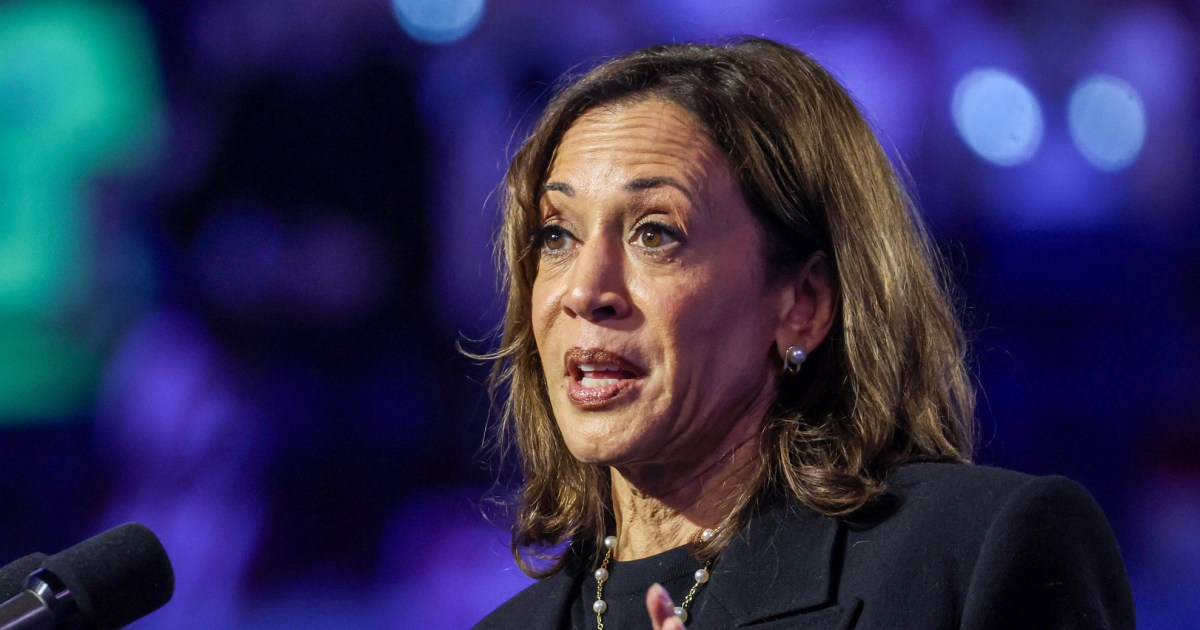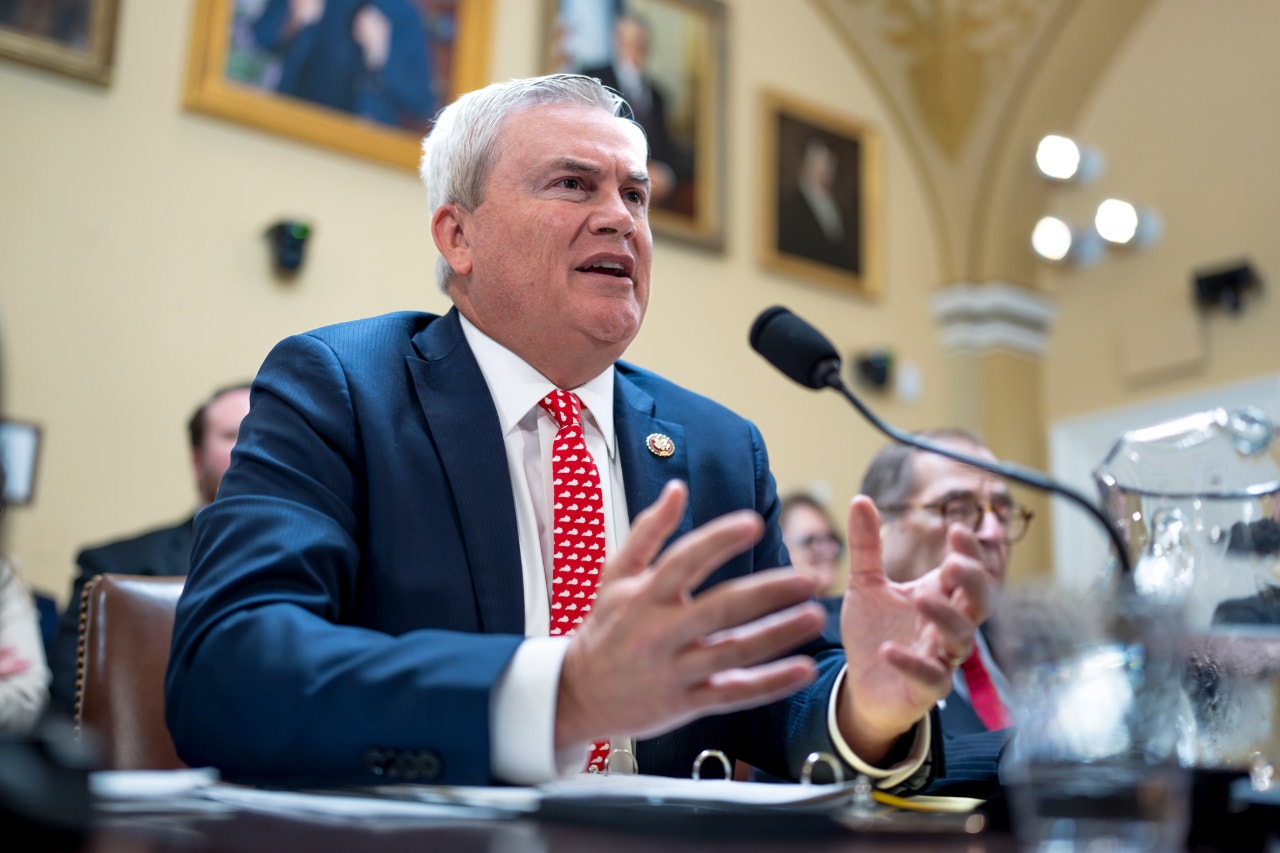Finance
The Hidden Risks Of BaaS And Embedded Finance: Inside Apple’s Struggle

Customer support plays a critical role in succesful fintech partnerships.
The honeymoon between Apple and Goldman Sachs may be over. Recent complaints from Apple Savings customers about their inability to quickly withdraw funds and encountering “rude” customer support staff from Goldman Sachs have awakened the trillion-dollar company to some of the challenges of partnering with a BaaS or Embedded Finance (EF) enablers. For a company like Apple, known for its impeccable customer support, the impact of these complaints could pose a risk to the exceptional customer experience Apple provides its users.
BaaS and EF continue to revolutionize and democratize financial services, and many are taking note. The global embedded finance market valued at USD 65.46 billion in 2022 is expected to grow at a compound annual growth rate (CAGR) of 32.2% from 2023 to 2030. From the surface the benefits are clear; reduced costs, quicker time to launch, out of the box tech, with regulatory and compliance requirements met.
Having worked on both the supply and demand side of BaaS and Embedded Finance, challenges will always arise once the product is live, such as managing edge cases and restrictions on product development, as brands are tied to the BaaS or EF enablers product roadmap.
The Wild Card: Customer Support
Perhaps the most underrated challenge is handling customer support. Founders, CPOs, and CTOs primarily focus on the product and how to achieve product-market fit. They often overlook or do not prioritize the customer support function, which is critical for maintaining customer loyalty and a solid customer experience. BaaS and EF enablers are B2B companies, and their customers are not end-users. Therefore, BaaS and EF enablers tend to have customer success managers or partnership managers rather than a strong customer support team to help query end users problems.
What customers of Apple Savings experienced is not out of the ordinary. Customers who interact with the customer support team of the BaaS or EF enabler often experience waiting periods of days, sometimes weeks. Even when a fintech or brand has an in-house customer support team, sometimes the request is redirected to the BaaS or EF enabler, again leading to long response time and frustrated customers in what can feel like a disjointed experience.
Knowing The Flow of Funds and Compliance Requirements
Another challenge that fintechs and brands cannot escape is the often complex flow of funds model and regulator complexity faced by their BaaS or EF enabler. This is particularly true for multi-currency or multi-market fintechs that use multiple BaaS providers. A recent story involving a business owner chasing the fintech they used for their business account for two months. Funds meant to be returned to the user account, a German IBAN, were instead sent back to the custodial bank, an Estonian bank. It took two months to resolve the issue, without any clarification of what was wrong.
Often, customer support at the fintech and brand are not up to speed with the intricate workings of the BaaS or EF enablers’ partners and regulatory set-up. In Apple’s case, one customer complained about an “absolutely ridiculous experience where Apple Savings wouldn’t let me withdraw to one of the bank accounts on file as it wasn’t the account the funds originally came from.”
Goldman Sachs’ Nick Carcaterra commented on the recent complaints, stating, “The new Savings account for Apple Card users has received excellent customer response, exceeding our expectations. While the vast majority of customers experience no delays in transferring their funds, in a limited number of cases, a user may experience a delayed transfer due to processes in place designed to help protect their accounts. While we would not comment on specific customer interactions, we take our obligation to protect our customers’ deposits very seriously and work to create a balance between a seamless customer experience and that protection.”
The customer’s frustration could have mitigated by providing assurance around the funds, details of why the withdrawal was not approved, and why this is an important safeguard by Goldman Sachs to keep customers fund safe. The Apple user sees this as a massive inconvenience, but in the end, it is done for the customer’s benefit.
How to Create a Win-Win
Working with a BaaS or EF enabler has pros and cons. For any brand or fintech on the path to such a partnership, a customer support strategy should be an absolute priority, and the following points can be considered when building a strategy:
- Always opt to staff your own customer support over the BaaS or EF enabler. This allows you to own your tone of voice and ensuring you have a complete handle on the situation. In Apple’s case, the user felt that the Goldman Sachs customer support agent was “lecturing” him, posing a considerable risk to maintaining Apple’s overall customer experience.
- Provide the right amount of information when it comes to the flow of funds queries. The perception of “lost money” among customers is highly triggering and concerning. Transparency and ensuring customers that their funds are not lost will be critical to retaining customers who go through this experience. Re-assure them that measures are taken to protect their funds.
- Equip your product and customer support teams with the basics of banking. Explain how inflows and outflows of funds work, what parties are involved, and when a potential delay could occur. While this may seem obvious, there often needs to be more knowledge between the product owner at a brand, and the compliance or tech teams of a BaaS or EF enabler.
While BaaS and EF hold immense potential, recent issues between Apple and Goldman Sachs underscore the importance of prioritizing customer support and understanding the complexities of fund flows in such partnerships. By addressing these challenges head-on, brands and fintechs can navigate the embedded finance landscape while delivering exceptional customer experiences.

Finance
Annual climate finance doubled between 2018 and 2022 but needs to increase at least fivefold to avoid worst consequences of climate change, study shows – CPI

31 October 2024, London – Climate finance is going to be at the center of COP29 negotiations in Baku next month. A new study shows that annual climate finance must increase at least fivefold by 2030 to meet the goals of the Paris Agreement and to avoid the worst consequences of climate change.
The Global Landscape of Climate Finance 2024: Insights for COP29 report, published today by Climate Policy Initiative (CPI), found that climate finance flows reached almost USD 1.5 trillion, having doubled between 2018 and 2022.
However, climate finance currently only represents 1% of global GDP, far short of what is needed. Emerging markets and developing economies (EMDEs) may need around 6.5% of their GDP by 2030 to meet climate goals.
“While global climate finance has made some strides, a much more ambitious, cohesive, and effective approach is essential to address the vast funding gap,” said Barbara Buchner, CPI’s Global Managing Director. “The data from CPI’s Global Landscape report leaves no doubt that investment needs to scale across all fronts—domestically, internationally, and across sectors—to reach our mutual climate goals. COP29 is an opportunity to establish clear, collaborative commitments to finance the transformation needed for a sustainable future.”
CPI’s report further details the cost of inaction, estimating that projected economic losses by 2100 will be five times greater than the climate finance that is needed by 2050 to stay within a 1.5°C warming scenario. The economic impact under a “business-as-usual” scenario will be exponential if climate action is delayed, further exacerbating financial strain on all economies.
Alarmingly, investments in fossil fuels continued to rise globally throughout 2023 and 2024 to surpass USD 1 trillion, despite global commitments to reduce fossil fuel investments. Subsidies for fossil fuel consumption in emerging economies increased fivefold during the same period.
The insights provided in this year’s Global Landscape of Climate Finance 2024, the most comprehensive overview of global climate-related primary investment, are particularly crucial ahead of COP29, which marks a critical juncture for establishing the New Collective Quantified Goal (NCQG) to make finance flows consistent with a pathway towards low greenhouse gas emissions and climate-resilient development.
Several large-scale processes need to occur simultaneously in the next five years to accelerate the scale, speed, and quality of climate finance amid constrained budgets and conflicting political and financial priorities. To enhance the scale and effectiveness of global climate finance, CPI proposes prioritizing the following topics: innovation and replication; targeting and allocation; domestic policies and ownership; and cross-cutting, multi-stakeholder action.
For more information, register for the webinar on Monday, 4 November 2024.
Media contact:
Jana Stupperich
Senior Communications Associate
jana.stupperich@cpiglobal.org
About Climate Policy Initiative
CPI is an analysis and advisory organization with deep expertise in finance and policy. Our mission is to help governments, businesses, and financial institutions drive economic growth while addressing climate change. CPI has offices in Brazil, India, Indonesia, South Africa, the United Kingdom, and the United States.
Finance
Inside Super Micro's wake-up call: After riding the AI wave, the $20 billion tech giant is crashing back to earth amid a financial crisis and family drama

Silicon Valley tech company Super Micro was supposed to be riding high: After flying under the radar for a quarter of a century, the company had ridden the coattails of the recent generative AI boom. The $20 billion manufacturer builds some of the most important hardware used to power the top artificial intelligence models–that is, high-performance servers that house the leading AI chips, including Nvidia’s.
Over the past five years, as the AI boom picked up steam before exploding post-ChatGPT, Super Micro’s shares soared over 3,000% and its reported revenue doubled to $7.12 billion, to earn it a glitzy debut on the Fortune 500. But accounting issues have continued to haunt the company: It settled with the Securities & Exchange Commission in August 2020 over two years’ worth of alleged accounting violations, and then in 2024 short-seller Hindenburg Research claimed Super Micro continued to engage in questionable accounting practices.
And now, things just got even more real. Super Micro’s auditor resigned in the midst of its work with the tech firm, a move generally considered to be one of the reddest of red flags in the financial and investment community. And after Super Micro broke that news to investors, auditor Ernst & Young came back with a World Series grand slam rebuttal.
In a letter to the regulators, EY said it only agreed with the company’s disclosures in the first paragraph, the first sentence of the second paragraph, the third paragraph, the first three sentences of the fourth paragraph, and a few others. That’s it.
“We have no basis to agree or disagree with other statements of the registrant contained therein,” EY wrote to SEC commissioners.
For investors, those can be read as fighting words. Super Micro’s stock tumbled 33% on Wednesday.
Governance expert and Georgetown University associate professor Jason Schloetzer told Fortune this type of resignation is unusual and is consistent with a “noisy withdrawal.”
“It’s pretty clear there are irreconcilable differences between management and the auditor that are severe enough to spill into the public domain,” said Schloetzer. “An auditor resignation is already in red flag territory, so this one will certainly get close scrutiny from capital markets participants and regulatory agencies. Management will have some explaining to do.”
What went down at Super Micro?
The auditor’s response was prompted by the disclosure Super Micro made this week announcing EY’s departure. Critically, Super Micro told investors it “does not currently expect that resolution of any of the matters raised by EY, or under consideration by the Special Committee, as noted below, will result in any restatements of its quarterly reports for the fiscal year 2024 ending June 30, 2024, or for prior fiscal years.” Generally, Super Micro’s disclosure that they don’t think these concerns will prompt them to correct their financials is meant to soothe investors that are skittish about potential accounting problems.
The company formed the special committee in question after EY flagged concerns about its financial reporting to the board’s audit committee last July. In response, the board formed a special committee to investigate—and hired law firm Cooley LLP and forensic accounting firm Secretariat Advisors to probe. As of today, that review remains ongoing, according to Super Micro.
In a statement to Fortune, a Super Micro spokesman said it disagreed with EY and added it is working “diligently” to hire a new auditor. The spokesman emphasized that Super Micro does not believe it will need to issue any restatements or corrections to its financials.
Accounting expert Francine McKenna told Fortune that the EY resignation went beyond the usual quiet exit auditors make when they slip away from an engagement. “There are noisy resignations and then there are resignations that bang a big giant gong—and this is as bad as it can get,” said McKenna, who authors The Dig newsletter.
In its resignation letter, EY wrote that it was no longer able to rely on management and the board’s audit committee, which is supposed to be made up of independent directors who oversee the company for the benefit of shareholders. “When you can’t rely on management, that’s bad,” said McKenna. “If you can’t trust the audit committee, there is something very wrong.”
A Super Micro spokesman told Fortune: “We have announced a first quarter business update call for Tuesday November 5th.” Not ideal timing, given that’s Election Day. Super Micro declined to comment further.
Amy Lynch, former regulator with the SEC and Financial Industry Regulatory Authority, told Fortune it appears EY has “serious concerns about the company and contacted the SEC in order keep themselves from being charged in any subsequent enforcement action.”
“SMCI may very soon find itself under investigation by the SEC for accounting-related fraud, if not already,” said Lynch, founder and president of FrontLine Compliance. “The SEC acts very quickly in these circumstances.”
The SEC did not immediately respond to a request for comment.
EY’s abrupt departure is the latest in a pileup of problems at a company considered a Wall Street darling not that long ago. Super Micro got a warning letter from Nasdaq last month after it failed to file its annual financial report on Aug. 29. The stock was still trading on the tech-heavy exchange, but the company was given a 60-day notice to either pony up a 10-K or submit a plan to regain compliance.
Super Micro got an extension until Nov. 27 to deliver on its fiscal year 2024 audited financial statements. The company also implemented a 10-for-1 forward stock split that took effect Sept. 30, increasing its authorized shares from 100 million to 1 billion. Stock splits are commonly used to make shares more affordable to investors because it lowers the price per share. Nvidia did a split this year also. It can also boost liquidity and flexibility in equity compensation. Super Micro CEO Charles Liang’s salary was revised in 2021 to just a dollar a year and all his comp was converted into performance-based stock options, according to the company, with potential value of $60 million.
What’s up with the short report?
In August, famed short-seller Hindenburg Research hit the company with a 19,000-word short report. It claimed to have found “glaring accounting red flags, evidence of undisclosed related party transactions, sanctions and export control failures” after a three-month investigation. Super Micro described the report as “false and misleading” in a letter to investors.
That was after the SEC previously fined the company $17.5 million for alleged improper accounting from 2015 to 2017. Super Micro paid the fine without admitting or denying the findings. Former chief financial officer Howard Hideshima was also fined in the action—and cofounder and CEO Liang, while not charged with misconduct, had to repay the company $2.1 million in stock profits he received while the accounting errors were occurring—a compensation clawback.
It likely required a lot of heavy lifting from the audit committee. During 2018, the committee met 42 times, 38 of which were special meetings. In 2020, it met 15 times, with 11 special meetings. The grand total for the past three fiscal years is 47 audit committee meetings. On average, according to data from governance benchmarking analytics firm Esgauge, S&P 500 audit committees met about eight times a year for the past three years.
Super Micro: A family affair
The company was founded in September 1993 by board chairman and CEO Liang and his wife, Sara Liu. A third cofounder, Yih-Shyan (Wally) Liaw was involved until January 2018 when he resigned all his positions as the company dealt with regulators following a previous audit committee investigation. But, as of May 2021, Liaw was back, advising Super Micro on development. He returned to full-time employment in August 2022 and rejoined the board in December 2023, according to the company’s most recent proxy report.
The company also involves multiple family relatives in its business entities, based on its disclosures. At least two sisters-in-law work at the company and a third loaned $12.9 million (plus interest) to Liang. The company’s most recent disclosure showed that he owed her $16 million.
Cofounder Sara Liu’s brother, Hung-Fan (Albert), works for the company; Sara Liu’s sister-in-law, Shao Fen (Carly) Kao, works there; Sara Liu’s other sister-in-law, Mien-Hsia (Michelle) Hung, also works there.
In October 2018, Liang personally borrowed the $12.9 million from Chien-Tsun Chang, the spouse of his brother Steve Liang (also Charles Liang’s sister-in-law). Charles needed it to pay back margin loans to two financial institutions that had been secured by Super Micro’s stock, the company’s disclosures state. The loans were called in after Nasdaq suspended the stock from trading on Aug. 23, 2018 after Super Micro failed to file multiple quarterly and annual reports with the SEC. It was delisted from the Nasdaq Global Select Market and quoted on the OTC Market. It was relisted on the exchange on Jan. 14, 2020.
From there, the disclosed inter-company transactions and business relationships get even more complex. Super Micro has entered into a series of agreements with a Taiwan corporation called Ablecom Technology and one of its affiliates, Compuware Technology, according to Super Micro’s financial filings.
Super Micro outsources server design and manufacturing to Ablecom Technology. In fiscal 2023, Super Micro bought $167.8 million in products from Ablecom, and as of June 2023, Super Micro owed Ablecom $36.9 million. Super Micro also paid Ablecom $12.1 million for “design and tooling” in fiscal 2023, according to Super Micro.
There’s another family relationship in that mix. The CEO of Ablecom is Steve Liang, brother of Charles, per Super Micro’s financial disclosures. The complexity intensifies from there—according to Super Micro’s most recent proxy statement, Steve Liang and his family own 28.8% of Ablecom. Charles Liang and his wife Sara Liu own 10.5% of Ablecom. Bill Liang (brother of Steve and Charles) is on Ablecom’s board and is CEO of the other entity involved, Compuware. (Neither Charles Liang nor Super Micro own stock in Compuware and Super Micro doesn’t own stock in Ablecom or Compuware. Ablecom owns less than 50% of Compuware, the company reported.)
Furthermore, Ablecom’s sales to Super Micro make up a “substantial majority” of its net sales, the company disclosed. For the fiscal years ended June 30, 2023, 2022, and 2021, Super Micro bought products from Ablecom totaling $167.8 million, $192.4 million, and $122.2 million, respectively. During the same period, Super Micro owed Ablecom $36.9 million, $46.0 million and $41.2 million, respectively. Super Micro paid Ablecom $12.1 million, $8.3 million, and $8.6 million, respectively, for design services, tooling assets and miscellaneous costs, per the company filings.
Meanwhile, Compuware is a distributor for Super Micro in Taiwan, China, and Australia—and Super Micro outsources power design and manufacturing to Compuware. Compuware’s sales of Super Micro products to other businesses make up a majority of Compuware’s net sales. In fiscal 2023, Super Micro sold $36.3 million in products to Compuware and in June 2023, Compuware owed Super Micro $24.9 million. In fiscal 2023, Super Micro bought $217 million in products from Compuware, and in June 2023, Super Micro owed Compuware $66.2 million. Super Micro paid Compuware $2 million for “design and tooling.”
In addition, Super Micro and Ablecom jointly established Super Micro Asia Science and Technology Park in Taiwan “to manage shared common areas.” Each company contributed $200,000 for a 50% ownership stake in the venture, according to the company’s disclosures.
Super Micro says its maximum financial exposure to Ablecom was $23.7 million in outstanding purchase orders as of June 30, 2023, and Super Micro’s maximum financial exposure to Compuware was $46.8 million in outstanding purchase orders as of June 30, 2023.
Super Micro also disclosed that a sibling of Yih-Shyan (Wally) Liaw, a board member and senior vice president of development, owns approximately 11.7% of Ablecom’s capital stock and 8.7% of Compuware’s capital stock.
For now, Super Micro’s spokesman said it will talk with investors on the Election Day call. But in a September letter to customers and business partners, Liang (the CEO and founder, not his siblings) emphasized the accounting delay that impacted its annual report and the Hindenburg issue wouldn’t impair its ability to deliver goods.
“Importantly, however, when we announced the decision to delay our Annual Report filing, we indicated that based on the work done so far, we don’t anticipate any material changes in our fourth quarter or fiscal year 2024 financial results,” wrote Liang. “This is good news. I continue to have strong confidence in our finance and internal teams.”
Finance
OECD Review on Aligning Finance with Climate Goals

Aligning finance with climate policy goals is crucial for achieving net-zero greenhouse gas emissions and resilience to climate change, as called for by Article 2.1c of the Paris Agreement. Evidence-based policy making and investment decisions towards such alignment need to be informed by robust assessments. To support such efforts, this inaugural OECD Review on Aligning Finance with Climate Goals brings together best-available evidence on three core questions: (i) How is climate alignment of finance assessed? (ii) What do we know about current finance flows and stocks? (iii) What evidence exists on the role of financial sector policies and actions? The report identifies actions policymakers and financial sector stakeholders can take to improve the evidence base and better align finance with climate goals. It further sets out good practices to prevent greenwashing and inaccurate claims of climate alignment.
-

 Movie Reviews1 week ago
Movie Reviews1 week agoAlien Country (2024) – Movie Review
-
/cdn.vox-cdn.com/uploads/chorus_asset/file/25431700/STK201_SAM_ALTMAN_CVIRGINIA_A.jpg)
/cdn.vox-cdn.com/uploads/chorus_asset/file/25431700/STK201_SAM_ALTMAN_CVIRGINIA_A.jpg) Technology7 days ago
Technology7 days agoOpenAI plans to release its next big AI model by December
-

 Health6 days ago
Health6 days agoNew cervical cancer treatment approach could reduce risk of death by 40%, trial results show
-

 Culture7 days ago
Culture7 days agoTop 45 MLB free agents for 2024-25 with contract predictions, team fits: Will Soto get $600M+?
-

 Sports5 days ago
Sports5 days agoFreddie Freeman's walk-off grand slam gives Dodgers Game 1 World Series win vs. Yankees
-
News5 days ago
Sikh separatist, targeted once for assassination, says India still trying to kill him
-

 Culture4 days ago
Culture4 days agoFreddie Freeman wallops his way into World Series history with walk-off slam that’ll float forever
-

 Technology4 days ago
Technology4 days agoWhen a Facebook friend request turns into a hacker’s trap




















